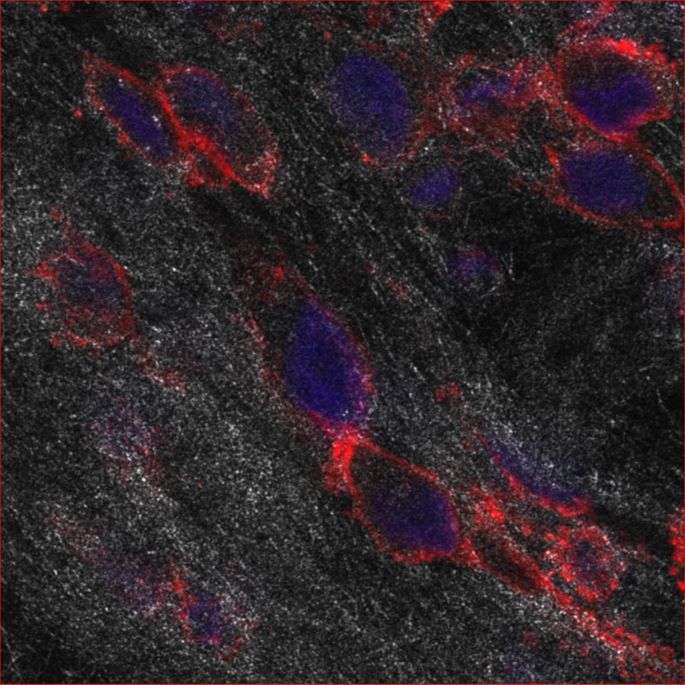Collective cancer cell migration
Anouk van der Net
Cancer cells migrating from a primary tumour into surrounding tissues is an important indicator for the onset of metastasis. Cancer cells that migrate collectively have considerable physical challenges while navigating through extracellular matrix, but are more efficient in metastasizing compared to cells that migrate individually. Currently, it is not well understood how cancer cell clusters overcome these physical challenges and metastasize effectively. To migrate as a cluster, cells adhere to each other via intercellular adhesions that are connected to the cytoskeleton, which results into a mechanical coupling between the cells that allows the cells to move as one matter. Moreover, cell-matrix adhesions are also linked to the cytoskeleton and allow the transduction of mechanical cues between cells and local matrix. Because the cytoskeleton plays an important role in both cell-cell and cell-matrix interactions, we aim to better understand the role of different cytoskeletal components and their crosstalk on the migratory behaviour and biophysical properties of cancer cell clusters. By studying spheroids, 3D cancer cell in vitro models, we aim to research collective cancer cell migration in a physiologically relevant and controllable environment. We use spheroids to create models of individual and collective cancer cell invasion in collagen hydrogels. These migration models are then analysed for migratory behaviour, cell-cell and cell-matrix interactions, cytoskeletal components and crosstalk with quantitative time-lapse confocal microscopy. The mechanical properties of the cells and their microenvironments are measured by (micro)rheology and/or 3D traction force microscopy.
